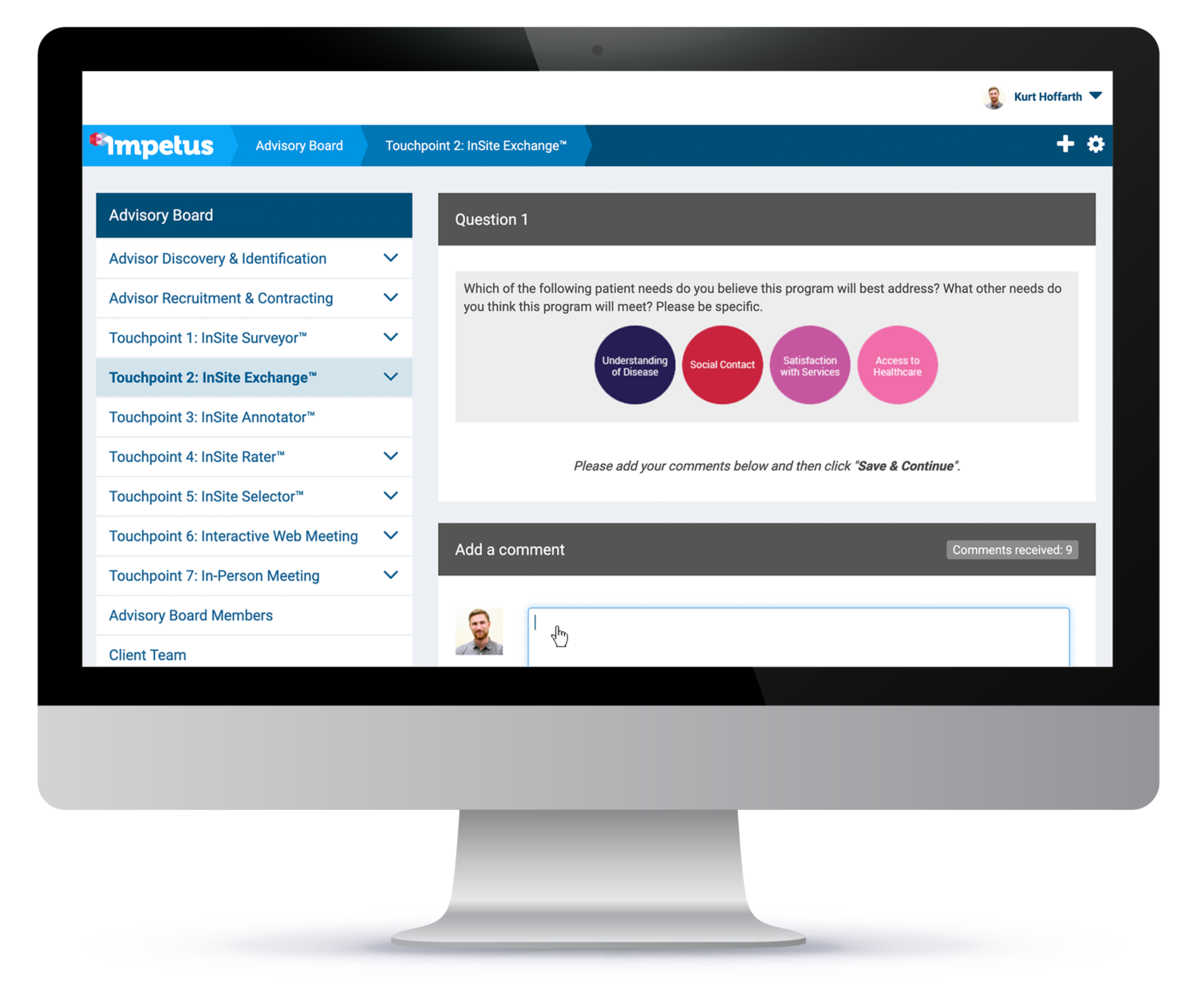A version of this article was previously published on PharmaPhorum.
“Diversity.” It’s a word that is very commonly thrown around right now, not just in Pharma and healthcare but across all industries. No matter which sector you work in, diversity and inclusion should not be treated as mere buzzwords designed to help improve the perception of a company, but as must-haves. We live in a diverse world and our teams, clinical trial participants, customers, and key opinion leaders (KOLs) should reflect this.
Diverse teams
 There are multiple reasons why companies need to prioritize diversity on their teams. McKinsey’s Diversity Matters report, which examined proprietary data from 366 public companies across various industries in North America, Latin America, and the UK, found that companies in the top quartile for both gender and ethnic diversity are 25% more likely to have financial returns above their respective national industry medians than the bottom quartile. In the UK, every 10% increase in gender diversity on the senior-executive team corresponds to an Earnings Before Interest and Taxes (EBIT) increase of 3.5%. These results on their own should be enough to make Human Resources leaders take a step back and reconsider their hiring practices.
There are multiple reasons why companies need to prioritize diversity on their teams. McKinsey’s Diversity Matters report, which examined proprietary data from 366 public companies across various industries in North America, Latin America, and the UK, found that companies in the top quartile for both gender and ethnic diversity are 25% more likely to have financial returns above their respective national industry medians than the bottom quartile. In the UK, every 10% increase in gender diversity on the senior-executive team corresponds to an Earnings Before Interest and Taxes (EBIT) increase of 3.5%. These results on their own should be enough to make Human Resources leaders take a step back and reconsider their hiring practices.
In the new hybrid workplace, geography is becoming less of a barrier. Employees no longer have to live in close proximity to the company headquarters, meaning that companies can also greatly expand their search for the right candidate. Companies embracing a hybrid office post-COVID will have the opportunity to cast a wider net and recruit in smaller or more remote communities. It remains to be seen whether this will also improve gender and ethnic diversity in the long term. However, one potential benefit of this model is that it allows skilled people (usually women) who may be doubling as caregivers for young children or elderly family members to more easily enter the workforce.
Diversity in clinical trials
Racial disparities are still commonplace in most clinical trials. It is known that factors such as ethnicity, sex, and age contribute to interindividual differences in treatment responses and risks of adverse events. Inadequate clinical trial representations of all populations can therefore leave minority groups vulnerable due to the lack of subgroup-specific data.
A notable example is the relative lack of Black participants in cardiology trials. Black patients are 30% more likely to die from heart disease than non-Hispanic whites but account for less than 3% of clinical trial participants, truly highlighting the need for improved clinical trial recruitment and revised eligibility criteria.
Some companies like Pfizer and Eli Lilly are actively working on initiatives to improve diversity in clinical trials but we still have a long way to go.
Are decentralized and virtual trials the answer?
The increasingly popular concepts of virtual and decentralized clinical trials could potentially help reach more participants in rural communities or those who are not able to regularly visit a central study site. Decentralized and virtual trials remove the need to travel and take time off work, which is not always feasible for participants with lower socioeconomic status, health issues preventing traveling, or just busy schedules. Further, decentralized trials allow for recruitment in underserved areas that do not traditionally have access to study sites or to information about clinical trial opportunities. Virtual trials can also overcome language barriers and the communication issues that frequently plague traditional clinical trials.
However, ensuring truly diverse clinical trials (virtual or not) starts at the time of protocol development. Gathering feedback on the protocol, recruitment approach, and eligibility criteria from all relevant stakeholders, including clinician-scientists and patient advocates, is therefore crucial. Just like the trial itself, collaborating on this virtually will allow more diverse voices and perspectives to be heard.
Virtual collaboration and insight-gathering
 Virtually engaging healthcare stakeholders can help enhance diversity and inclusion in multiple ways. In addition to gathering feedback on or co-creating study protocols, online advisory boards, steering committees, and publication working groups can (both directly and indirectly) result in more diversity, including diversity of thought.
Virtually engaging healthcare stakeholders can help enhance diversity and inclusion in multiple ways. In addition to gathering feedback on or co-creating study protocols, online advisory boards, steering committees, and publication working groups can (both directly and indirectly) result in more diversity, including diversity of thought.
Unlike in-person meetings, virtual engagements allow KOLs with busy schedules, including surgeons and other difficult-to-reach healthcare professionals, to attend advisory board meetings. Virtual and hybrid meetings also allow more diverse voices to be heard. For example, instead of only engaging specialists, general practitioners, nurses, pharmacists, and even patients can be engaged in the same or in a parallel advisory board. Instead of only including established KOLs, the virtual format is ideal for engaging emerging opinion leaders or community providers. If leveraging an asynchronous (“over-time”) format, additional barriers such as language and time zone differences can also be effectively overcome. Further, introverted or junior advisors now get equal say to their louder, extroverted, or more experienced colleagues.
Asynchronous advisory boards are also ideal for engaging patients, who may be unable to take time off work or too sick to travel long distances. The virtual format allows patients to remain anonymous, creating an environment where they feel safe to share their honest thoughts.
By including more diverse participants, the insights gathered will, in turn, be more diverse and better reflect the real-world clinical scenario. Advisors can also help Pharma teams identify treatment, resource, and education gaps in specific populations and suggest specific approaches to bridge these gaps.
The reality is that most patients are not treated at university hospitals or by internationally renowned clinicians; they are managed by primary care providers or at local hospitals and centers. Recognizing this and actively recruiting diverse advisors is a great first step to ensuring that all perspectives are considered.
Virtual events and medical education
The rise of virtual events has resulted in conferences and medical education sessions suddenly becoming accessible to people who would otherwise never have been able to attend. From busy community physicians to healthcare providers from the other side of the world, the virtual format has vastly enhanced the reach of these events. As a result, the audiences are becoming more diverse, and services such as instant translation or real-time expert interpretation enable international attendees to fully participate in the event. As hybrid events are set to become the norm, making sure that those who prefer to attend virtually get an equally engaging experience will be key.
Benefits of embracing diversity and inclusion
Ultimately, embracing diversity and inclusion in all aspects of Pharma’s operations, from the top of C-suite executives down to the clinical trial participants and advisory board members, will serve to improve patient outcomes. Clinical trial results are more likely to be representative of the real-world outcomes when the participants come from different backgrounds. Engaging advisors from different regions or specialties allows new angles and perspectives to be considered. Products are more likely to be used by diverse populations if the marketing messages have been tailored to that population or if there is support available that matches their specific needs. The list goes on.
There is no one-size-fits-all solution to creating diversity in Pharma, but we all need to start somewhere. Ask yourself: what steps you will be taking today, tomorrow, and every day thereafter to create a more diverse and inclusive environment?
About Impetus Digital
Impetus Digital partners with life science organizations to virtualize their in-person meetings and events through our best-in-class InSite Touchpoints™ and InSite Events™ offerings, delivered with white-glove service and 360° coverage and care. Leveraging our large portfolio of cutting-edge online collaboration tools, clients can seamlessly gather insights from, and collaborate with, internal and external stakeholders. To find out more about Impetus Digital, visit our website, follow us on LinkedIn, Twitter, or Facebook, or book a demo at meetwithimpetus.com

